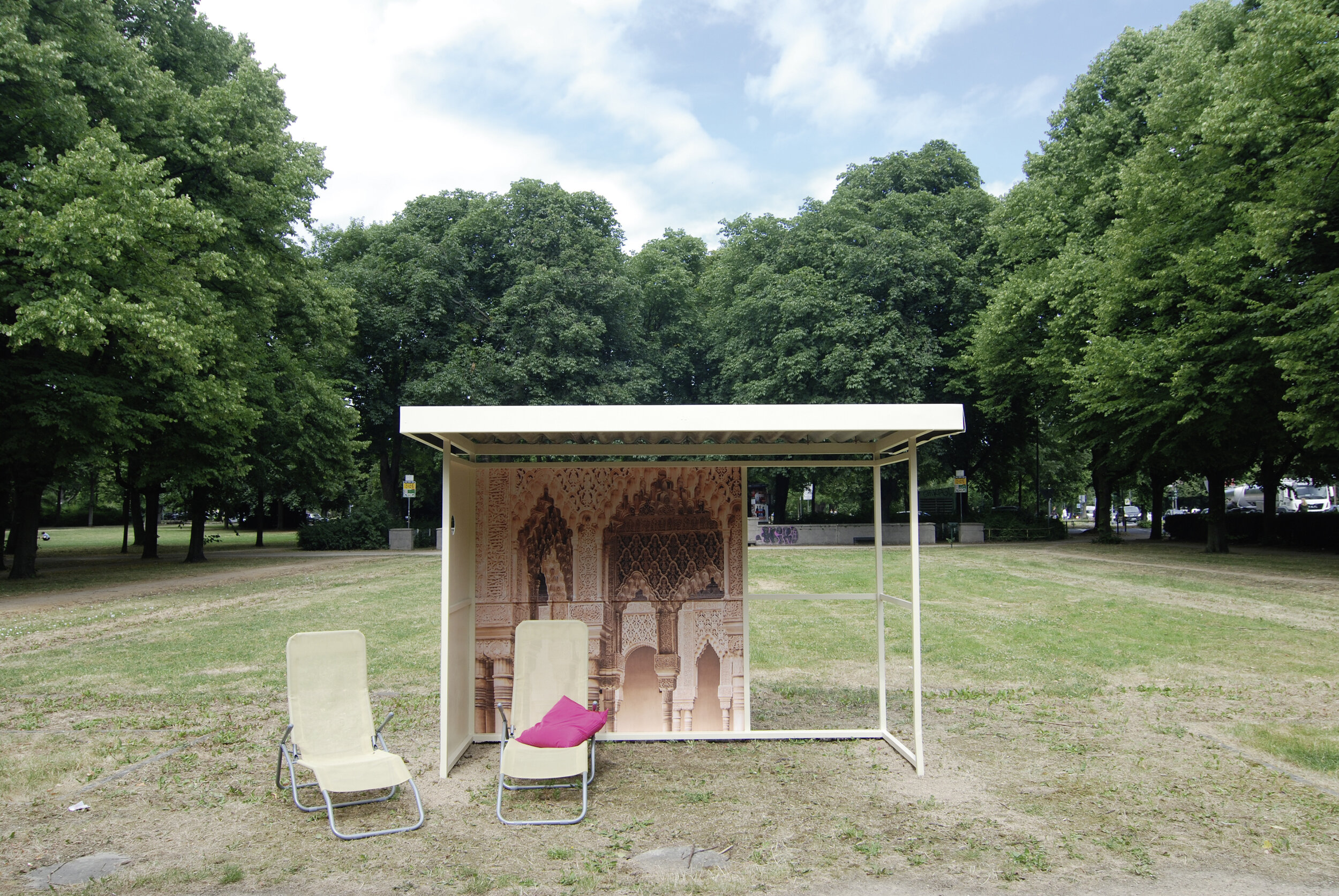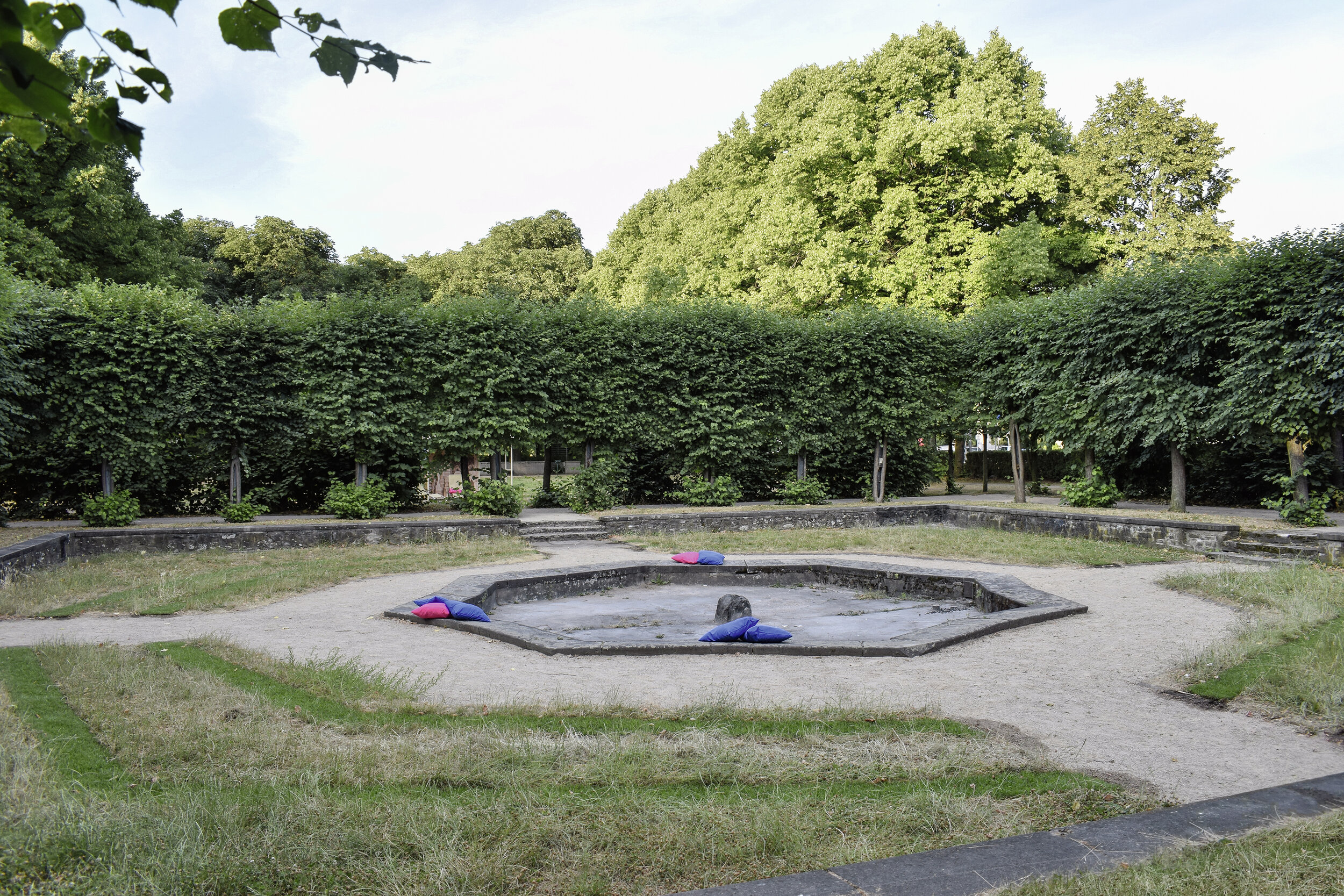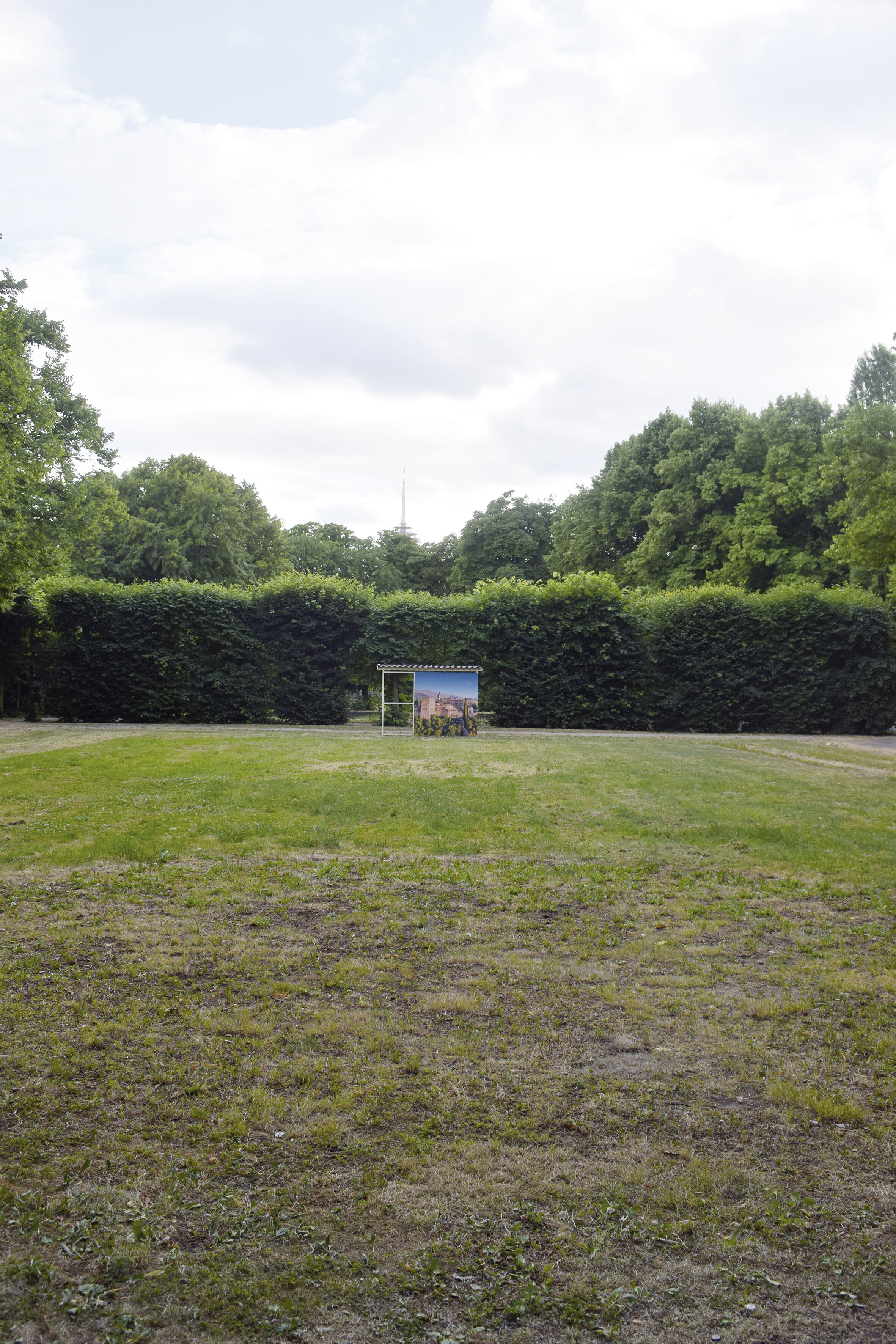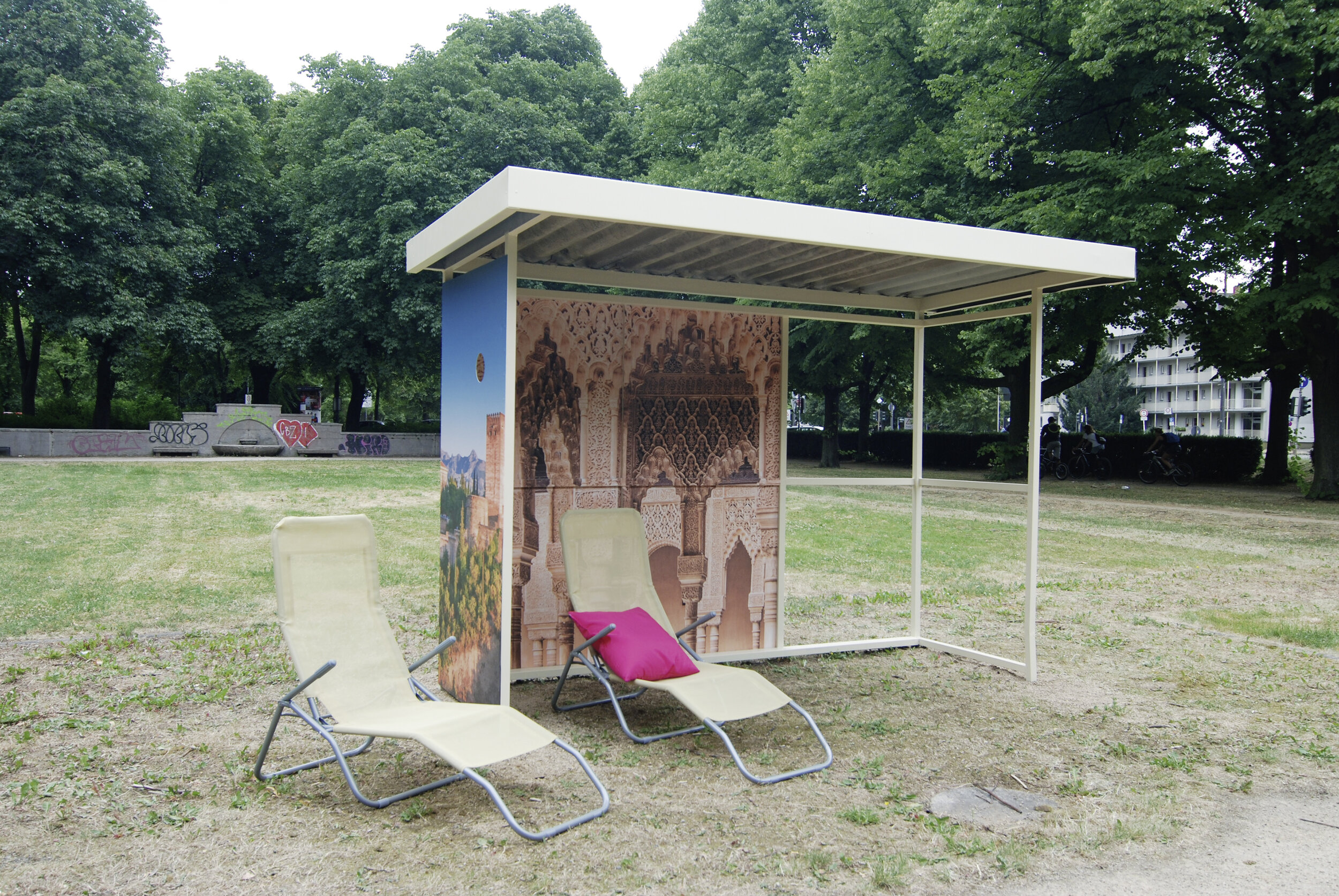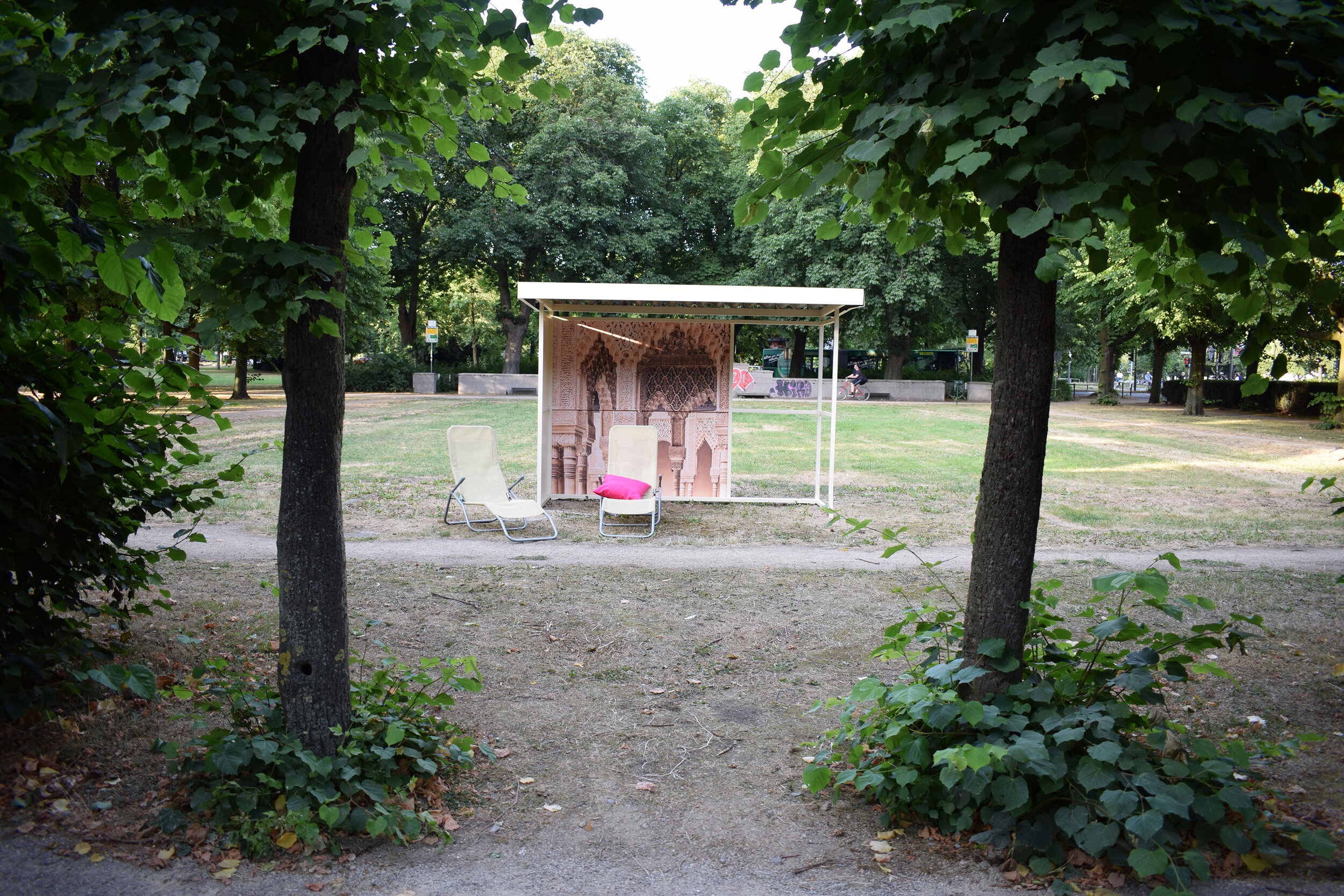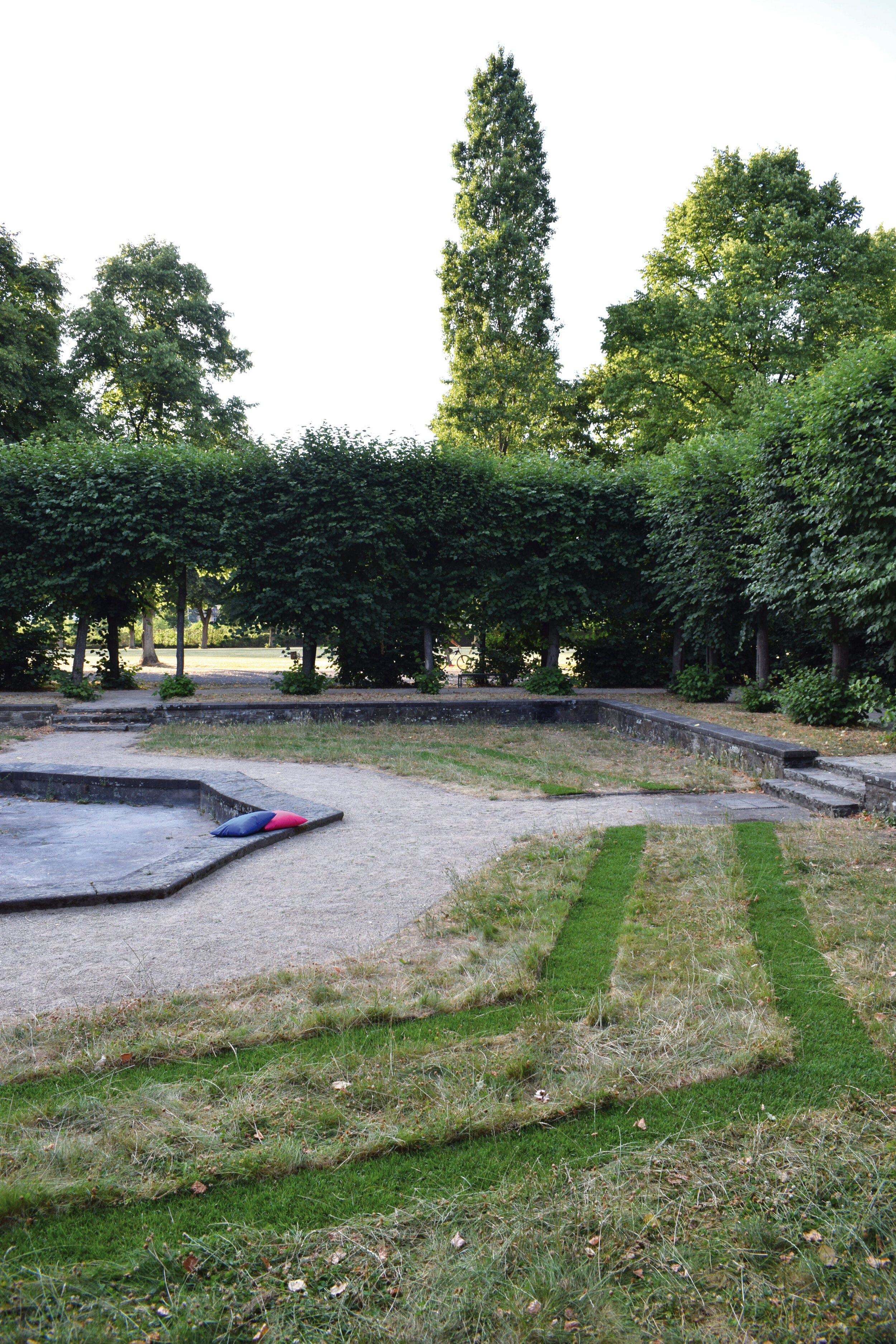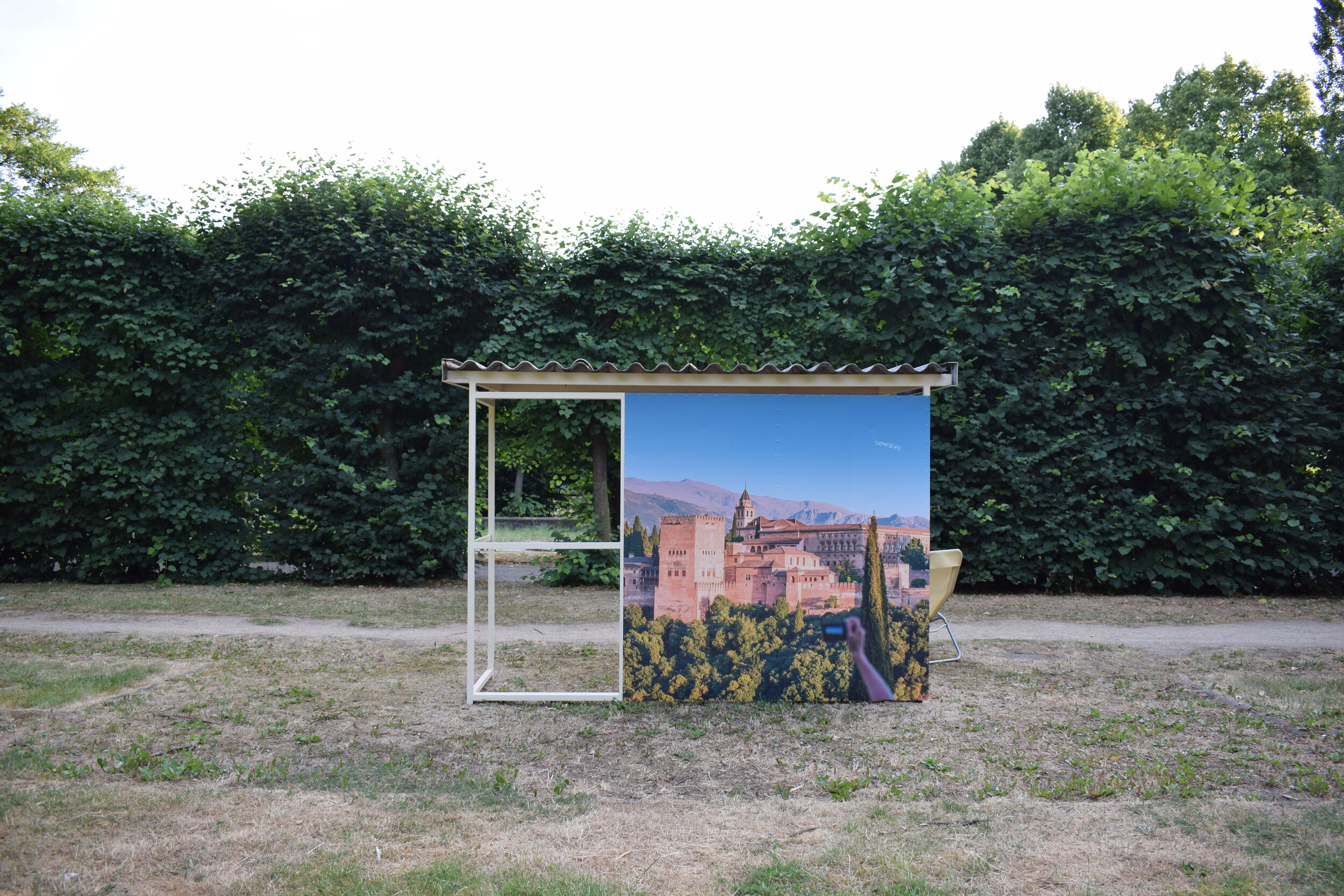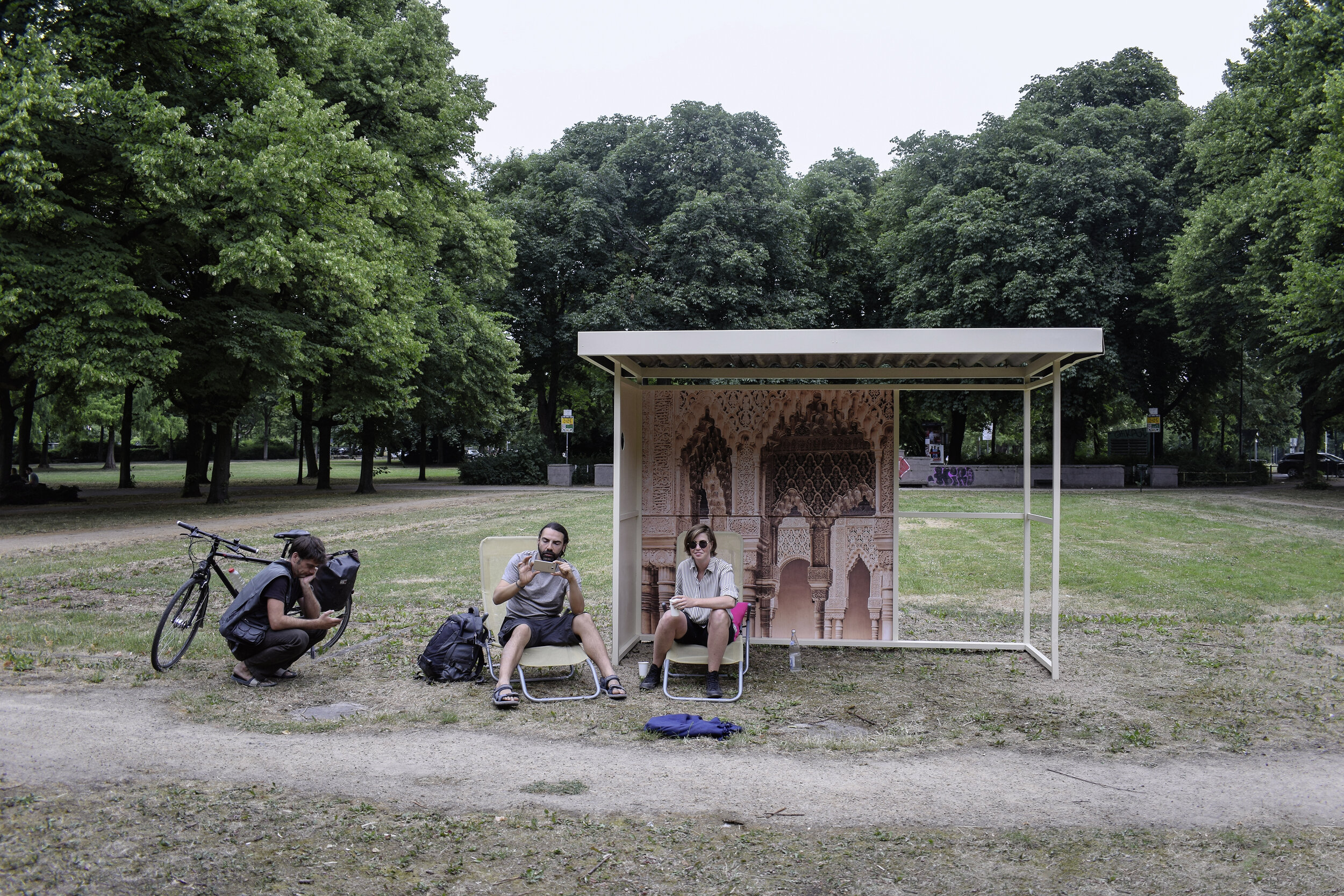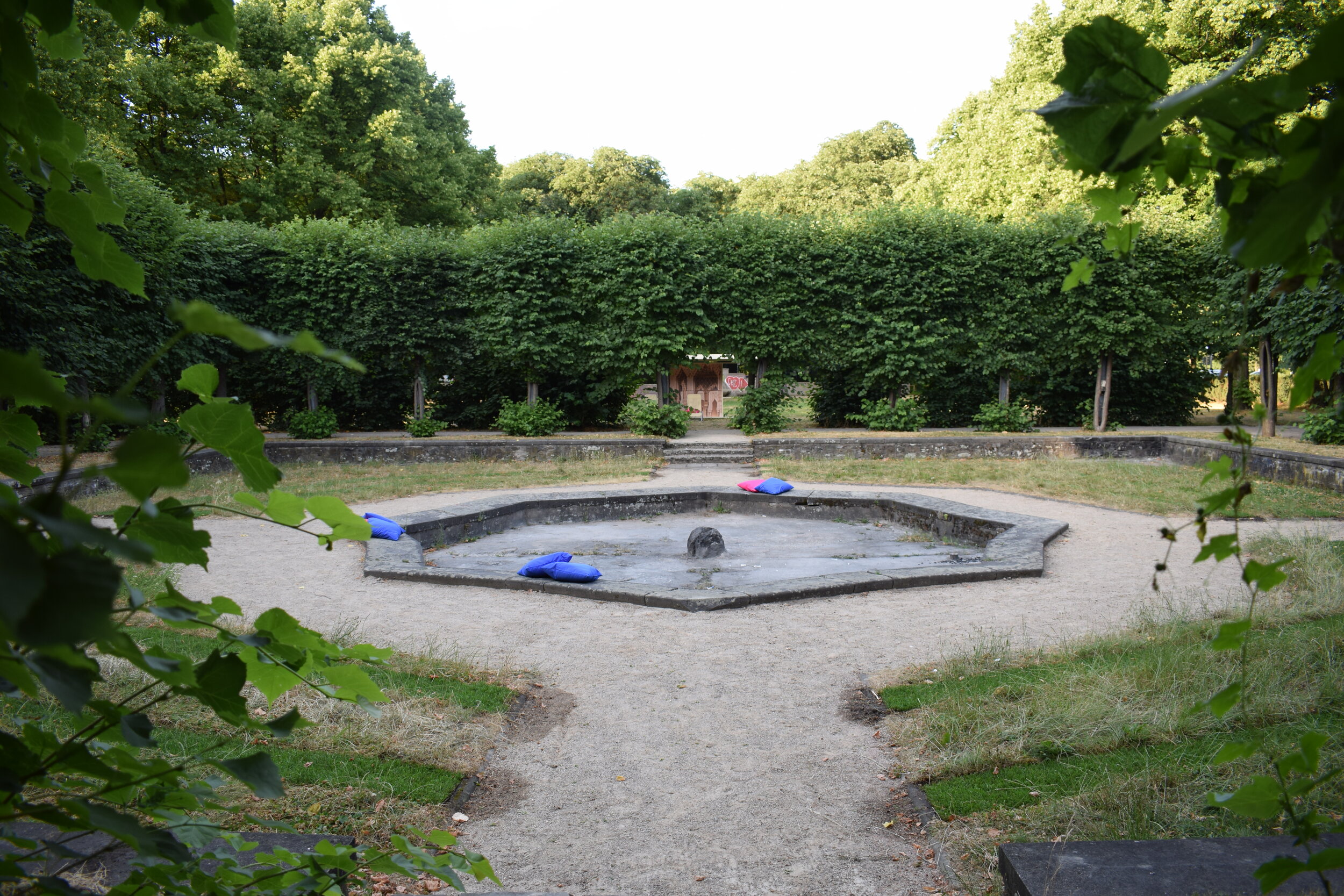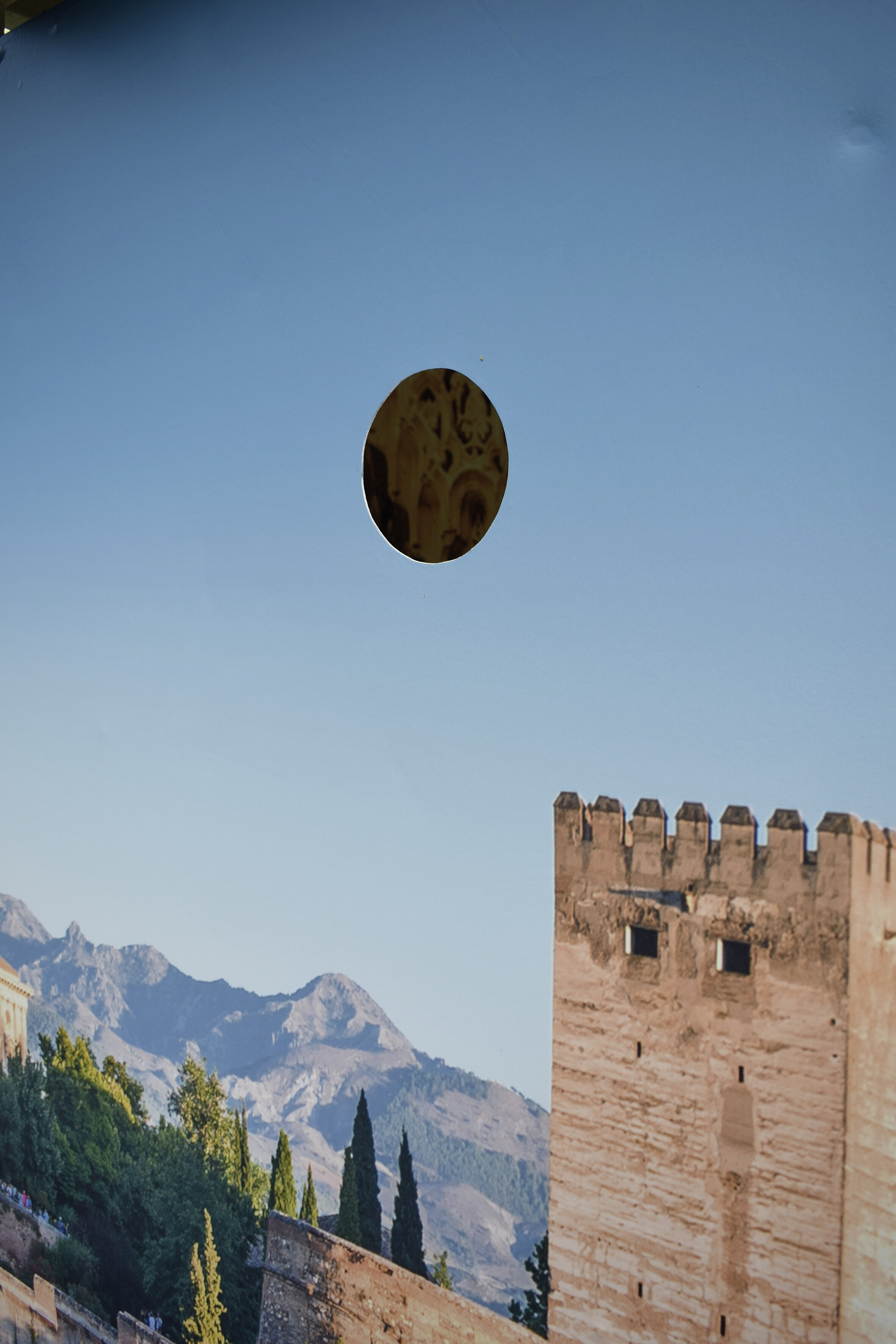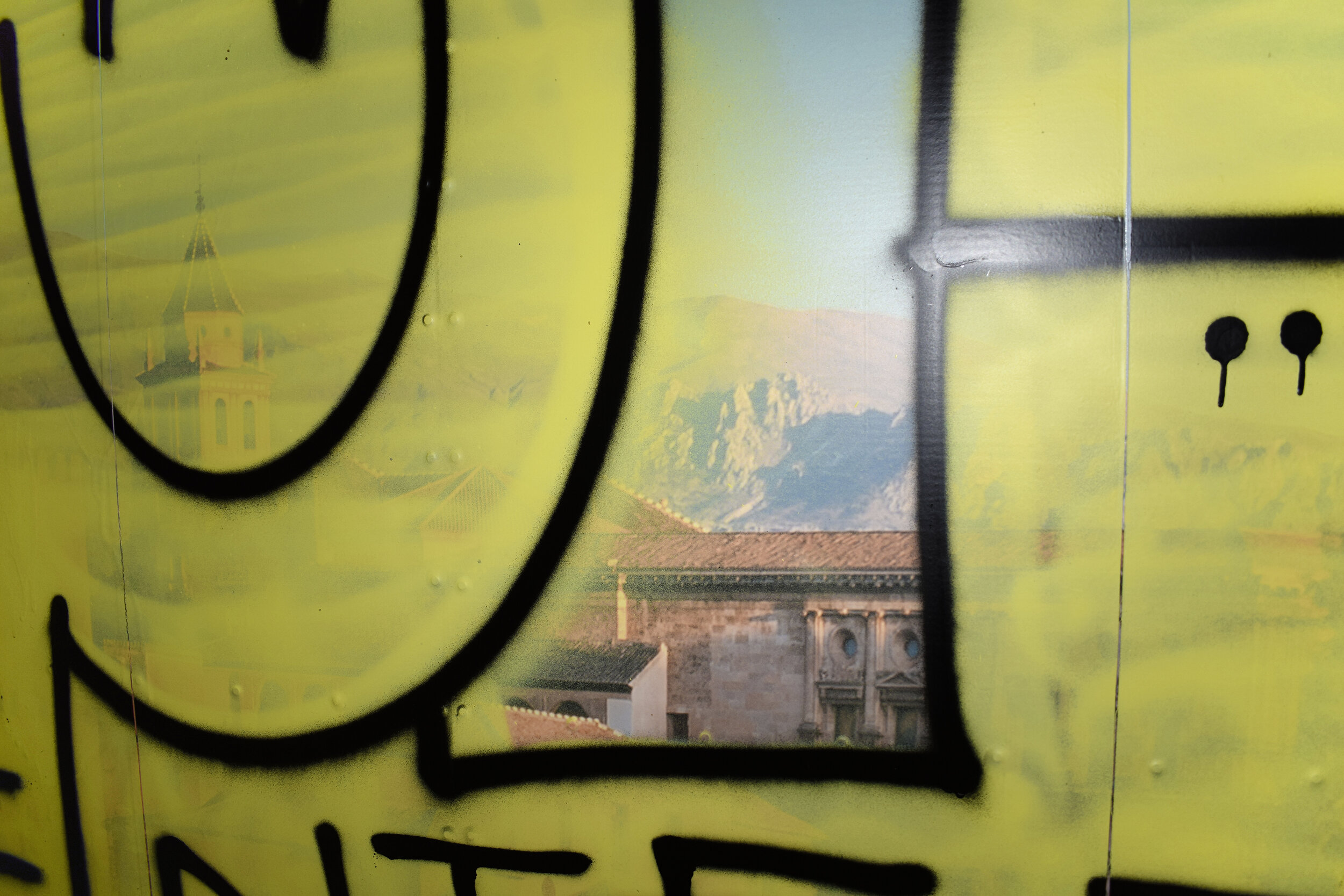Alhambra, 2017
Bus shelter approx. 420 x 220 x 220 cm, adhesive foil printing, photo motives by Shutterstock, turf, basalt, paint, pillows, deck chairs/ St.Open #4, co-work with Julia Weißenberg
The 4th bus shelter of the St.Open project is located in the middle of the so called ‘Kleine Alhambra’ (small Alhambra), a part of the green belt of Cologne in the city’s ‘Nippes’ district. The ‘Kleine Alhambra’ was designed by Fritz Schumacher as part of the urban planning of the green belt, it was commissioned by Konrad Adenauer in 1922. As the name suggests, the area is modeled on the gardens of the Alhambra Palace in Granada, Spain.
At that time, the city planned to provide places of nature and retreat, as well as sites of mental and physical education for its citizens. New values and social reformations at the beginning of the 20th century aided in the realization of this ambitious, democratic project that added to the cultural development of the modern urban life.
Today, the existence of this park is threatened: the ‘Kleine Alhambra’, has climate and ecological functions within the inner city area that are disregarded and neglected by the cities administration as it plans to replace the adjacent garden allotments with housing construction. The initiative ‘Die Grüne Lunge’ (the green lung) is fighting against these structural developments. However, due to a lack of maintenance, today Cologne’s ‘Kleine Alhambra’ shares few similarities with its Andalusian namesake.
The original Alhambra is regarded as one of the most beautiful examples of Islamic art and is a symbol of the so called heyday of Islamic culture. The first period of Al-Andalus (711 – 1492), then under the reign of the Moors, was know for a peaceful coexistence of three monotheistic religions. With regard to science, philosophy and the arts, this period had a great influence on Christian culture. In recent years, however, the public perception of Islam has frequently been reduced to its connection with terrorist attacks and the refugee crisis, especially after New Year's Eve 2015/16 in Cologne.
The work Alhambra focuses on the intellectual abundance that is manifested in the building of the Alhambra Palace. Today, the Alhambra is one of the most frequented European tourist attractions and has been a world heritage site since 1984.
The ‘Kleine Alhambra’ park, was an immediate part of the bus shelter and functioned as a site of encounter, information and imagination. As part of the project, the neglected grounds were transformed into a respectable and welcoming place. The barely visible footpath around the decommissioned octagonal fountain that was almost invisible due to overgrown weeds; it was cleaned and filled with basalt stones; turf was integrated into the existing grass around the garden; and for the opening event colored pillows were placed around the fountain.
The bus shelter, with its view of the garden, served as a bright pavilion. The outer walls of the Bus shelter were covered with pictures of the Alhambra Palace, while the pictures on the inside depicted the Palace’s lion square with its stalactites and connected the bus shelter with its surrounding park. Deck chairs placed beside the shelter offered people a moments rest and the opportunity to linger in the space. Thus through the art work, the ‘Kleine Alhambra’ of Cologne paid tribute to its namesake and was, for a short time, reanimated.
Photo: Helmut Nick, Julia Weißenberg, Selma Gültoprak
